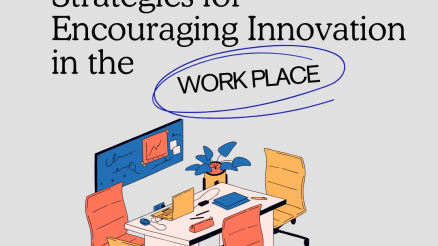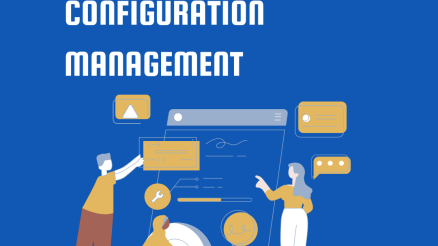Are you having trouble implementing changes in your organization?
You’re not alone.
Many change leaders and managers struggle with change management. Today business is changing at fast speed. There is continuous disruption in business due to innovations, technological advancement and changes in market economy.
The only way forward is to remain agile in the current ever-changing business environment. Keeping relevant in business requires change in the way of doing business.
But change is no that easy. There are many challenges, bottlenecks and barriers on the way to managing sustainable and impactful change.
In this blog post, we will discuss what are the 04 barriers to change management and how to overcome them.
04 Barriers to Change Management
There are many barriers but here we’ll discuss 04 most common and powerful barriers to change management.
1. Fear of uncertain future and result of change
The first barrier to change management is fear of the unknown future and outcome of change. This can be a major obstacle when trying to implement new processes or procedures in the workplace. Employees may be afraid of change because they don’t know what to expect. They may also resist change because they are comfortable with the status quo.
People hate uncertanity. Employees are specifically afraid of losing their jobs or compensation. This kind of uncertainty is not only about their own future but it is also about the future of organization. They may have past experience of failed change initiatives. All of these factors make them insecure and has negative impact on their performance and ability to adapt to change.
2. Poor leadership
The second barrier to change management is poor leadership. In order for changes to be successful, leaders must be committed to them. They need to be able to articulate the vision for the changes and inspire others to follow suit. Furthermore, leaders must be willing to make tough decisions when it comes to change. If leaders are not bought into the changes, it will be very difficult to implement them successfully.
Many a times, change leaders limit themselves to one or two role during entire change process. Due to this there will be a disconnect and gap between leadership and employees. That would ultimately lead to failure of change initiative.
3. Ineffective communication
Communication is important in change management. Changes can often be misunderstood or misinterpreted if they are not communicated properly. This happens because organizations fail to present clear and concise messages on change. Secondly, they focus on one-sided communication. And leaders and mangers fail to understand that top-bottom approach of communication doesn’t work in change management.
Organizations also make mistake in opting wrong communication channels to present change ideas and generate discussion on these ideas. In communication it is important to find right channel or medium to communicate with the target audience. This is also a barrier because organizations put less effort in knowing their audience and using right communication channels.
4. Unnecessary complexity
The fourth barrier to change management is unnecessary complexity. Changes can often be made more complex than they need to be. This happens when there are too many stakeholders involved in the decision-making process or when there is a lack of clarity about the goals of the changes.
Power dynamics, strict hierarchy, and rigid organizational culture that all contribute to making change complex. There may be individuals who are powerful and they resist change or there may be a collective resistance from employees. Resistance can be overt and if it is covert then it is more problematic.
How to Overcome 04 Barriers to Change Management?
1. Explain reason of change
To overcome the first barrier, it is important to provide employees with information about the changes. Be sure to explain the reasons for the changes and how they will benefit the company. They should be explained in simple ways that “what is in it for them”. You should also provide employees with training on the new procedures or processes.
In addition to explaining reasons of change, change leaders should take everyone on board at design phase of change. Employees participation in change management should be ensured. When employees are involved and their participation in decision making is ensured then they begin to own the change. They become part of the change process and it reduces their fear about change.
2. Lead change from the front
Change leaders need to be able to articulate the vision for the changes and inspire others to follow suit. Furthermore, leaders must be willing to make tough decisions when it comes to change. If leaders are not bought into the changes, it will be very difficult to implement them successfully.
Leaders are role models and employees will listen to them if they are advocating something. To make employee convinced about change, leaders must prove through their actions that they do what they advocate. They should also mentor and coach people to navigate through change process.
3. Communicate in a right way
Its important to build a two-way communication process which allows everyone to freely communicate on change ideas with their peers and managers or leaders. To overcome barrier of ineffective communication, it is important to prepare a change communication plan. This plan mainly includes drafting communication goals and objective, identifying key audience, crafting your key messages, and knowing right communication channels.
Some resources are also required to make change communication smooth and effective. There are many resources you may produce guide books, toolkits, research material, resources about new knowledge or information about training courses.
4. Simplify change process
It is important to simplify the change management process as much as possible. Make sure that there are only a few key decision-makers involved and that the goals of the changes are clear. The process of change management needs to be divided into clear and doable steps. The steps include knowing the exact need of change, developing a strategy to execute change, putting together best team to lead the change, putting plan into action, managing and overcoming resistance, tracking progress against the plan and taking corrective action if plan goes wrong.
Final Words
Every change initiative faces obstacles and barriers. There are 04 common barriers of change management but these are not insurmountable. By understanding these barriers to change management, you can take steps to overcome them. With the right attitude and approach, you can successfully implement changes in your organization.



